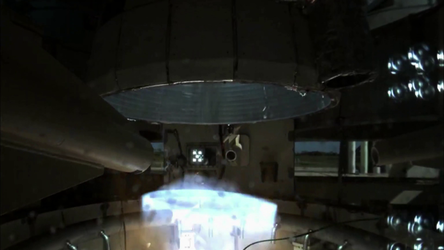Accept all cookies Accept only essential cookies See our Cookie Notice

About ESA
The European Space Agency (ESA) is Europe’s gateway to space. Its mission is to shape the development of Europe’s space capability and ensure that investment in space continues to deliver benefits to the citizens of Europe and the world.
Highlights
ESA - United space in Europe
This is ESA ESA facts Member States & Cooperating States Funding Director General Top management For Member State Delegations European vision European Space Policy ESA & EU Space Councils Responsibility & Sustainability Annual Report Calendar of meetings Corporate newsEstablishments & sites
ESA Headquarters ESA ESTEC ESA ESOC ESA ESRIN ESA EAC ESA ESAC Europe's Spaceport ESA ESEC ESA ECSAT Brussels Office Washington OfficeWorking with ESA
Business with ESA ESA Commercialisation Gateway Law at ESA Careers Cyber resilience at ESA IT at ESA Newsroom Partnerships Merchandising Licence Education Open Space Innovation Platform Integrity and Reporting Administrative Tribunal Health and SafetyMore about ESA
History ESA Historical Archives Exhibitions Publications Art & Culture ESA Merchandise Kids Diversity ESA Brand CentreLatest
Space in Member States
Find out more about space activities in our 23 Member States, and understand how ESA works together with their national agencies, institutions and organisations.
Science & Exploration
Exploring our Solar System and unlocking the secrets of the Universe
Go to topicAstronauts
Missions
Juice Euclid Webb Solar Orbiter BepiColombo Gaia ExoMars Cheops Exoplanet missions More missionsActivities
International Space Station Orion service module Gateway Concordia Caves & Pangaea BenefitsLatest
Space Safety
Protecting life and infrastructure on Earth and in orbit
Go to topicAsteroids
Asteroids and Planetary Defence Asteroid danger explained Flyeye telescope: asteroid detection Hera mission: asteroid deflection Near-Earth Object Coordination CentreSpace junk
About space debris Space debris by the numbers Space Environment Report In space refuelling, refurbishing and removingSafety from space
Clean Space ecodesign Zero Debris Technologies Space for Earth Supporting Sustainable DevelopmentLatest
Applications
Using space to benefit citizens and meet future challenges on Earth
Go to topicObserving the Earth
Observing the Earth Future EO Copernicus Meteorology Space for our climate Satellite missionsCommercialisation
ESA Commercialisation Gateway Open Space Innovation Platform Business Incubation ESA Space SolutionsLatest
Enabling & Support
Making space accessible and developing the technologies for the future
Go to topicBuilding missions
Space Engineering and Technology Test centre Laboratories Concurrent Design Facility Preparing for the future Shaping the Future Discovery and Preparation Advanced Concepts TeamSpace transportation
Space Transportation Ariane Vega Space Rider Future space transportation Boost! Europe's Spaceport Launches from Europe's Spaceport from 2012Latest

Ariane 5's Vulcain engine during XMM campaign
Thank you for liking
You have already liked this page, you can only like it once!
The Vulcain engine represents 30 years of development and constitutes a major programme in itself (a quarter of the total investment). Altogether 40 different European companies, led by France's Snecma Moteurs contributed to the programme. It was in 1957, that the French Ministry of Defence ordered research into cold-temperature propulsion. Associated in a rocket engine, liquid hydrogen and liquid oxygen provide unequalled energetic performance. The problem lay in mastering these two propellants in their extremely cold liquid state. This could only be achieved by using robust architecture and sturdy materials. The first cold-temperature propulsion engine was produced in the United States in 1962, then two years later, the French laboratory that was to give rise to the SEP Company, fired its own version. In 30 years the scale has changed. The 1964 prototype delivered a one-tonne thrust, Ariane-4's third stage can deliver 10 tonnes while the Vulcain engine can deliver 115 tonnes. This progress has been achieved by concentrating an extremely powerful turbopump into a relatively compact volume and by mastering the extreme temperatures entailed.
The Vulcain engine uses liquid oxygen and liquid hydrogen like the Ariane HM7B third stage engine. However, there is an important difference, the Vulcain engine generates three times the pressure and is 20 times more powerful. Although it only provides 8% of the total thrust needed at liftoff it is one of the main technological developments of the new launcher.
Vulcain is 3 m high, 1.76 m in diameter and weighs 1685 kg. It is fixed by gimbals on a thrust frame to the base of the main stage tanks. On either side of its combustion and thrust chamber are two high-speed turbopumps. These force the cryogenic propellants at high pressure into the chamber at a rate of 265 kg/sec.
-
CREDIT
ESA/CNES/Arianespace-S.Corvaja -
LICENCE
ESA Standard Licence

Vulcain Mk2 LOX turbopump for Ariane-5E

Vulcain 2.1 static firing test

Vulcain Mk2 engine for Ariane-5E

Vulcain Mk2 engine for Ariane 5E, 1998















 Germany
Germany
 Austria
Austria
 Belgium
Belgium
 Denmark
Denmark
 Spain
Spain
 Estonia
Estonia
 Finland
Finland
 France
France
 Greece
Greece
 Hungary
Hungary
 Ireland
Ireland
 Italy
Italy
 Luxembourg
Luxembourg
 Norway
Norway
 The Netherlands
The Netherlands
 Poland
Poland
 Portugal
Portugal
 Czechia
Czechia
 Romania
Romania
 United Kingdom
United Kingdom
 Slovenia
Slovenia
 Sweden
Sweden
 Switzerland
Switzerland























